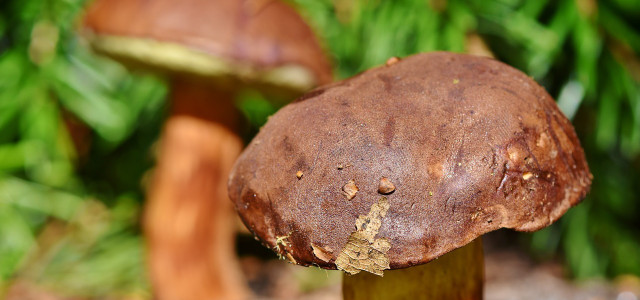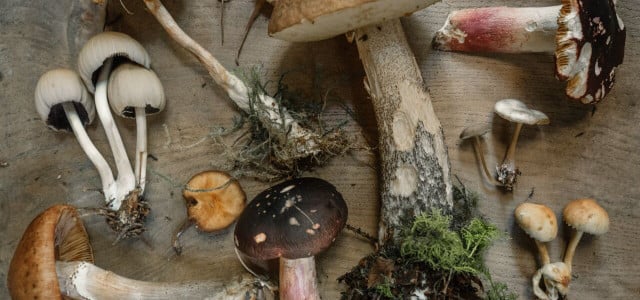Can you pick and eat lawn mushrooms? There are many different types, so it's important to know the common edible and poisonous backyard mushrooms.
Before getting into backyard mushrooms and different types of lawn mushrooms, it is extremely important to clarify that picking mushrooms needs to be very thorough as mistaking one mushroom for another can have tragic consequences, such as severe disease, organ damage, or even death.
Foraging for mushrooms is becoming more and more popular and many people like the excitement of finding novel mushroom species in the wild. However, it is quite hard to find out which mushrooms are edible as many edible mushrooms have some similar-looking but poisonous twins. Even for experienced pickers, certain toxic mushroom kinds can be difficult to distinguish from edible varieties due to their similar appearances.
Furthermore, some mushrooms can become more toxic based on their age, growing conditions, or how they are prepared. Before eating any form of mushroom, it is essential to have an awareness of its traits and properties.
Altogether, it is crucial to recognize mushrooms while foraging in a safe and correct manner. To keep mushroom foraging a risk-free and pleasurable hobby, you have to put safety and education first. To educate yourself about mushrooms, you could join a course or speak to foraging specialists before going mushroom picking for the first time. Lastly, when picking mushrooms, the rule “when in doubt, throw it out” applies at all times, as picking the wrong mushroom can become a dangerous mistake.
What Are Lawn Mushrooms?
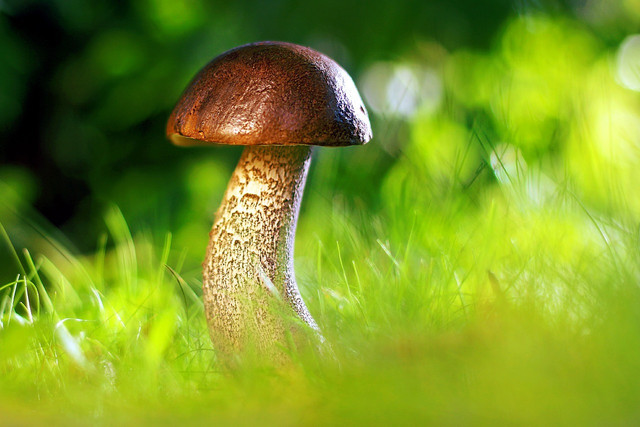
(Foto: CC0 / Pixabay / StefleiFotografie)
If you have a garden or a backyard that provides some damp and shady spots, you might also have some backyard mushrooms growing there. Among those mushrooms, you might find some types that are even edible. That said, due to the wide variety of mushrooms that may grow in backyards, it can be difficult to distinguish between those that are edible and those that are dangerous.
In general, backyard mushrooms grow on trees, logs, or directly on the ground and can pop up suddenly after rainfall or times of high humidity. Some types of lawn mushrooms that are edible include shiitake, oyster, and wine cap mushrooms. Examples of toxic backyard mushrooms are the deadly Galerina mushroom or the destroying angel mushroom.
All mushrooms should be handled carefully and you should never eat a mushroom unless you are 100% sure what kind of mushroom it is. Next to speaking with a local expert or joining a mushroom-picking group in your area, the following list of lawn mushrooms can help you identify the edible from the poisonous ones.
Types of Edible Lawn Mushrooms: Oysters
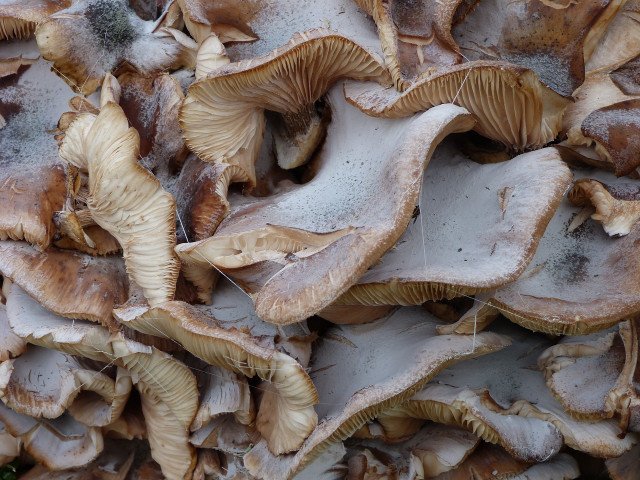


(Foto: CC0 / Pixabay / hynekschmidt0)
Oyster mushrooms (Pleurotus Ostreatus) are a common backyard mushroom as they typically grow in clusters on trees or logs in the fall and feature an eye-catching fan- or oyster-shaped cap. They are great in soups, stews, and stir-fries because of their mild, nutty flavor.
Shaggy Mane
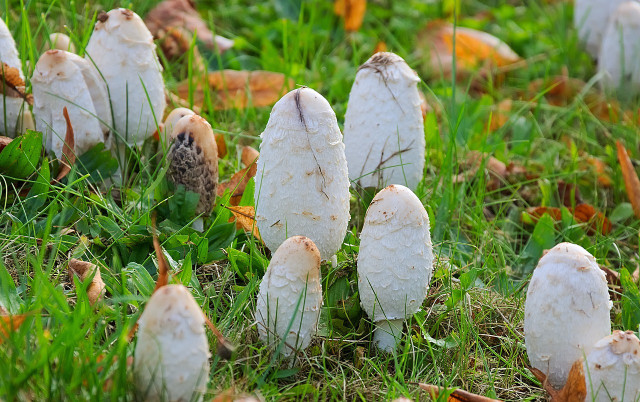


(Foto: CC0 / Pixabay / HansLinde)
The Shaggy Mane mushroom (Coprinus Comatus) is recognized for its unique shape. The stalk of this edible lawn mushroom is tall and narrow, and its shaggy, white cap eventually turns black as it ages. You may generally find Shaggy Manes in lawns or meadows in the late summer and early fall. Because of their delicate flavor, they make a great ingredient for soups. They can also be sautéed which brings out their flavor best.
Morel



(Foto: CC0 / Pixabay / bethL)
Edible morels (Morchella Spp.) are often found in the spring and have a distinctive honeycomb-like top. These mushrooms are a well-liked component in sauces, pasta, and risotto because of their meaty texture and deep, earthy flavor. Hunting for morels can be fun but also quite dangerous as there are many poisonous morel lookalikes, so make sure whether it is really the delicious kind before you prepare them.
Chicken of the Woods
Chicken of the Woods mushrooms (Laetiporus Sulphureus) are edible and typically grow on trees in the summer and fall and are a bright orange or yellow color. They are frequently used as a meat substitute in vegetarian cuisines and have a meaty, chicken-like flavor. When you find these lawn mushrooms, you can usually find them in large quantities, but there are a couple of similar-looking mushrooms out there that are not edible – so make sure to clarify if the mushrooms you found are Chicken of the Woods or not. Once you’ve verified your mushrooms, use our Chicken of the Woods recipe!
Puffball
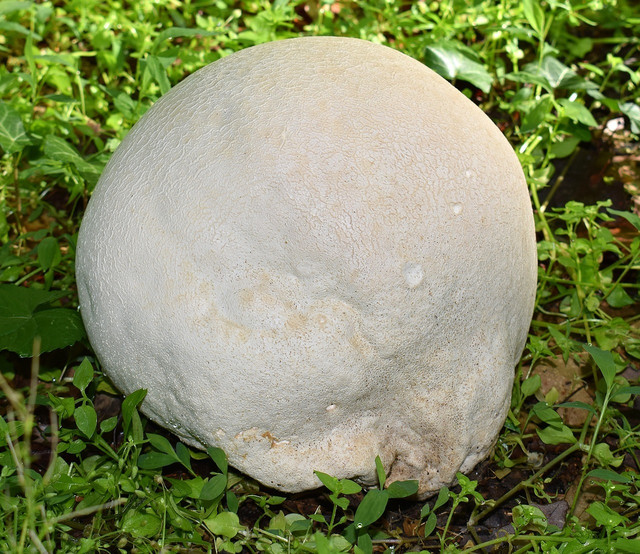


(Foto: CC0 / Pixabay / leoleobobeo)
Puffballs (Lycoperdon spp.) are experiencing a big hype on social media nowadays because of their sheer size. Some puffballs grow bigger than volleyballs and as they are edible, they make a great ingredient in many dishes. Some people even use puffballs as a substitute for a pizza base. In general, they can be added to a variety of recipes, such as soups and stews and they have a mild, nutty flavor. Puffballs grow in open spaces like lawns or fields in the late summer and early fall. They are quite distinguishable because of their big size and spherical, white, or brownish cap.
Poisonous Backyard Mushrooms: Destroying Angel
Destroying angel (Amanita virosa) are toxic lawn mushrooms that feature a long, thin stem with a bulbous base and a white, bell-shaped cap. They are often found in the summer and fall in forested regions. Destroying Angels are very dangerous and using them might result in liver or kidney failure because of their severe toxicity.
Death Cap
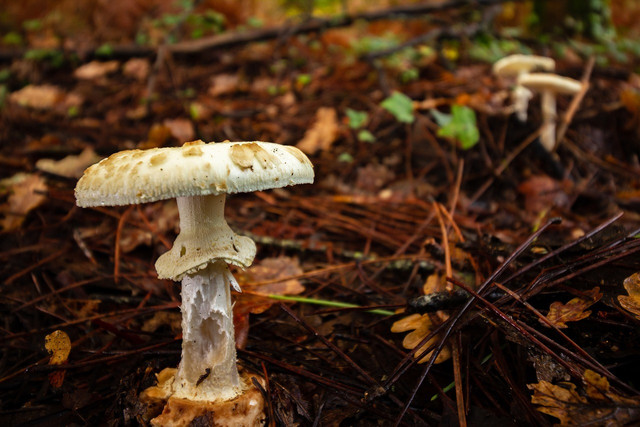


(Foto: CC0 / Pixabay / vjgalaxy)
Death caps (Amanita phalloides) are extremely poisonous and eating one of them can result in serious liver damage or even death. They look a bit similar to Destroying Angel mushrooms but they have a greenish-yellowish cap. Furthermore, Death Caps feature a white stem with a bulbous base. They are often seen in the fall and grow near trees.
Jack O'Lantern
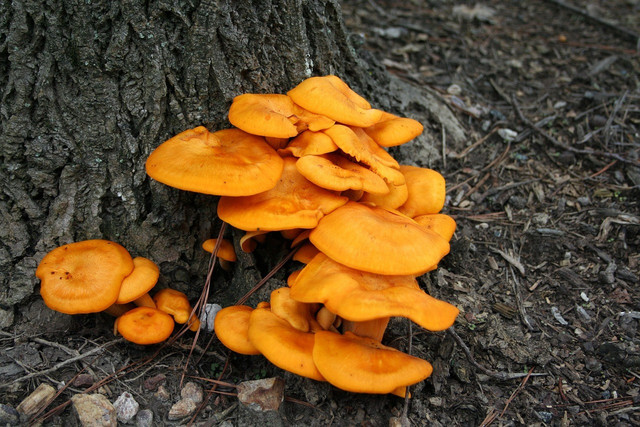


(Foto: CC0 / Pixabay / JamesDeMers)
Jack O’Lantern (Omphalotus illudens) might look similar to edible chanterelle mushrooms or Chicken of the Woods but are very poisonous. Jack O’Lanterns are a great example of why it is so important to identify mushrooms correctly as they can cause heavy gastrointestinal distress. These orange-colored mushrooms typically grow on wood in the fall. These backyard mushrooms have shinier caps and generally grow much bigger than chanterelle mushrooms.
False Morel
As mentioned above, morels have some lookalike twins that are very toxic. These wrinkled, brain-shaped mushrooms are often seen in the spring in wooded settings. False morels contain a toxin that, if consumed, can result in vomiting, diarrhea, and even death.
False morels (Gyromitra esculenta) have different caps and stem than edible morels. While false morels’ caps are wrinkled and brain-like, edible morels have honeycomb-like caps. Also, the stems of false morels are often darker and thicker than the stems of edible morels. It is crucial to identify morels correctly and if you are unsure, it might be better to throw them away.
Key Takeaways
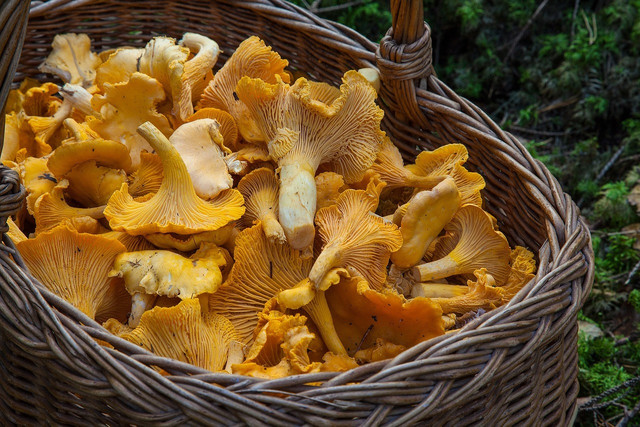


(Foto: CC0 / Pixabay / Barbroforsberg)
Discovering mushrooms in your own backyard can be fun, but it also requires an excellent base knowledge first. When identifying a mushroom, make sure that the mushroom you are picking is checking all the boxes of its description and not just a number of them.
Last but not least, it is critical to avoid eating any mushroom you are unsure about rather than consuming it, as eating the wrong fungus can cause severe health problems or even death.
Read more:
- Can You Eat Wild Onion? Here’s What to Look Out For
- Edible Weeds: 9 Common Weeds You Can Eat
- 3 Mushroom Desserts: Try These Decadent and Earthy Treats
Do you like this post?






